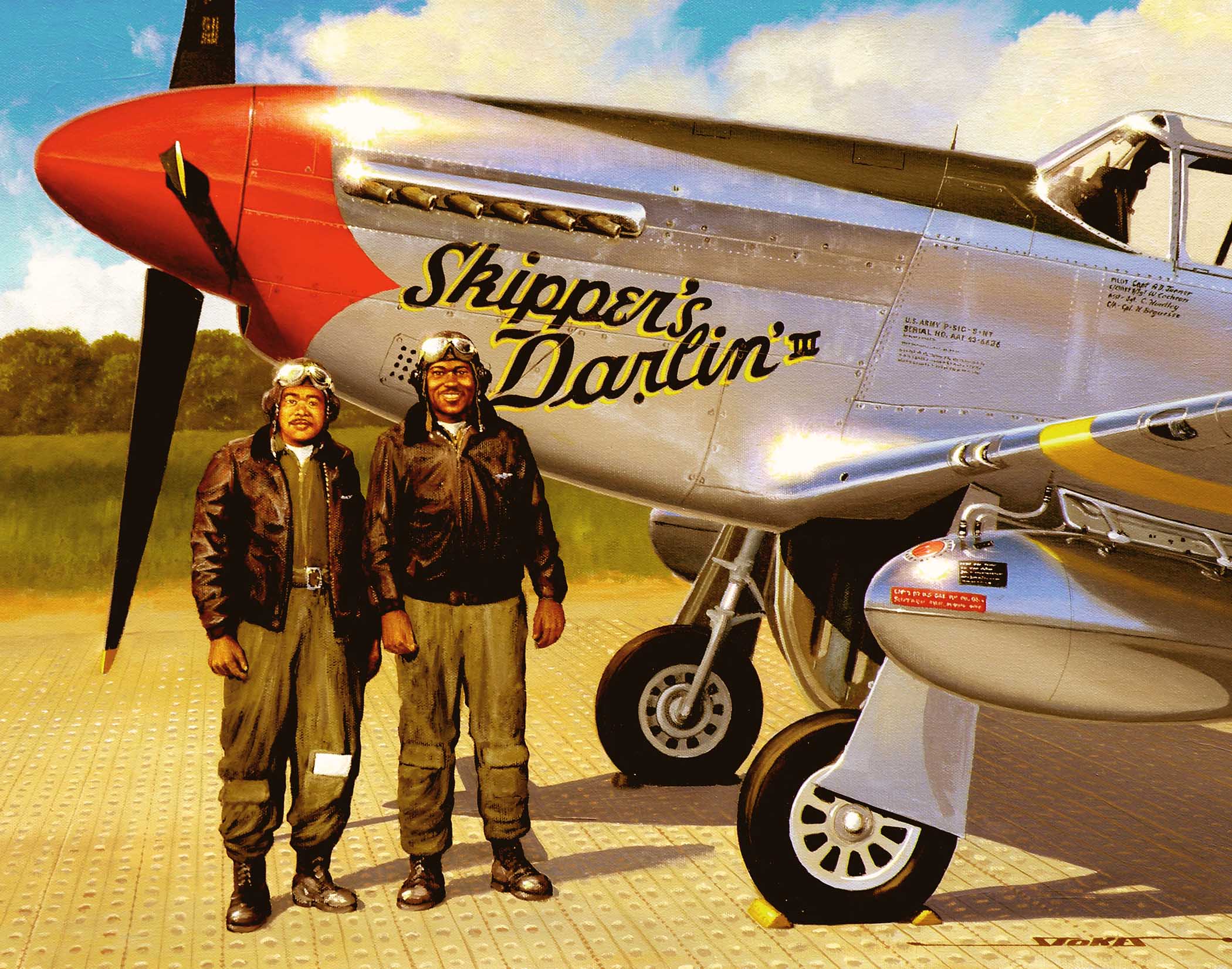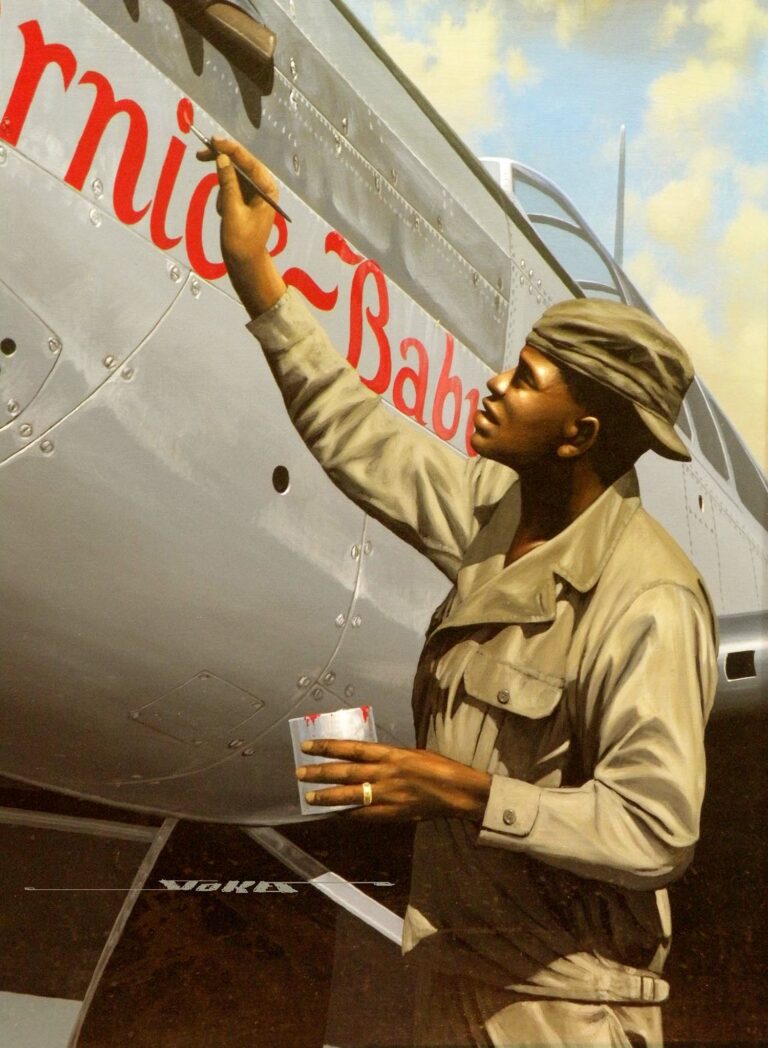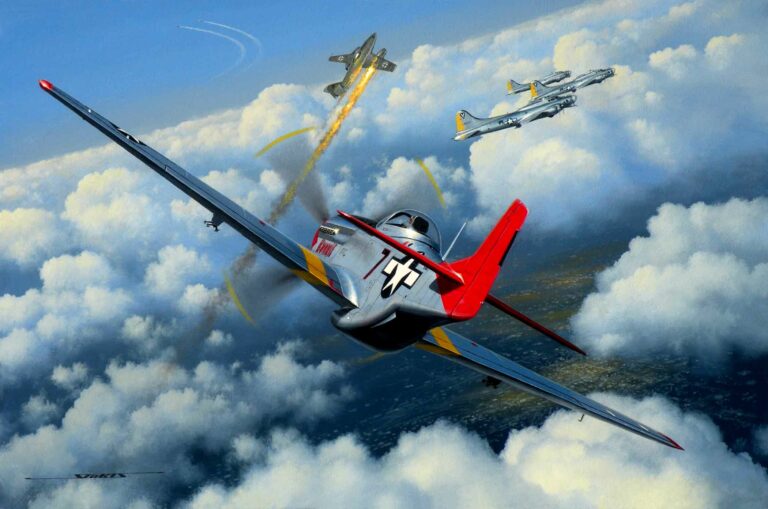Andrew Turner enlisted into the US Army on October 8, 1942 as a member of class 42-I-SE at Tuskegee, Alabama. He received his wings and was inducted into the US Army Air Force on October 9, 1942.
He deployed into WWII with the 100th Fighter Squadron. After a mission in which the 100th’s commanding officer, Lt. Robert Tresville, failed to return, Turner assumed command of the 100th. He flew the P-51 Mustang for 69 combat missions before the war ended.
Two years after the war had ended, Major Andrew Turner was killed in a mid-air collision while flying a P-47 Thunderbolt.
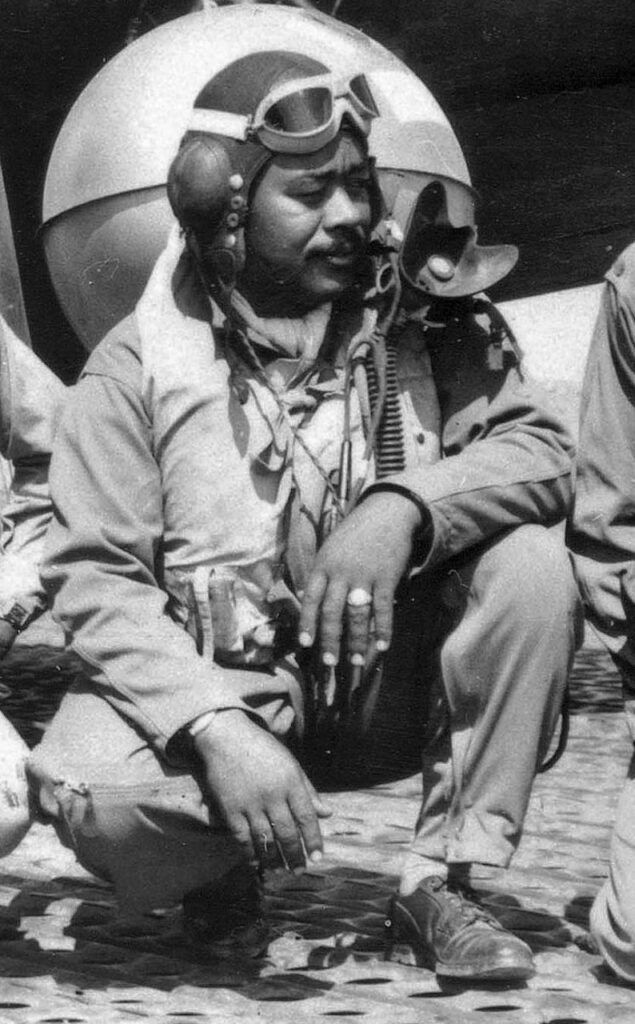
John Briggs was a cadet in flight training at Tuskegee in class 43-E-SE. He was commissioned a 2nd lieutenant and flew combat missions out of Italy as a member of the 100th Fighter Squadron, 332nd Fighter Group.
During WWII, he flew 125 combat missions in the P-39 Bell Airacobra. This is where he escorted Navy ships to the Italian Anzio Beachhead and strafed ground targets; 70 combat missions in the P-47 Thunderbolt and the P-51 Mustang, strafing German airfields and escorting B-17 and B-24 bombers to their targets in Germany, Poland, Hungary, Romania, Bulgaria and Yugoslavia. He also downed a Messerschmitt ME-109 German fighter aircraft.
Major John Briggs died in June 2007 at the age of 86.
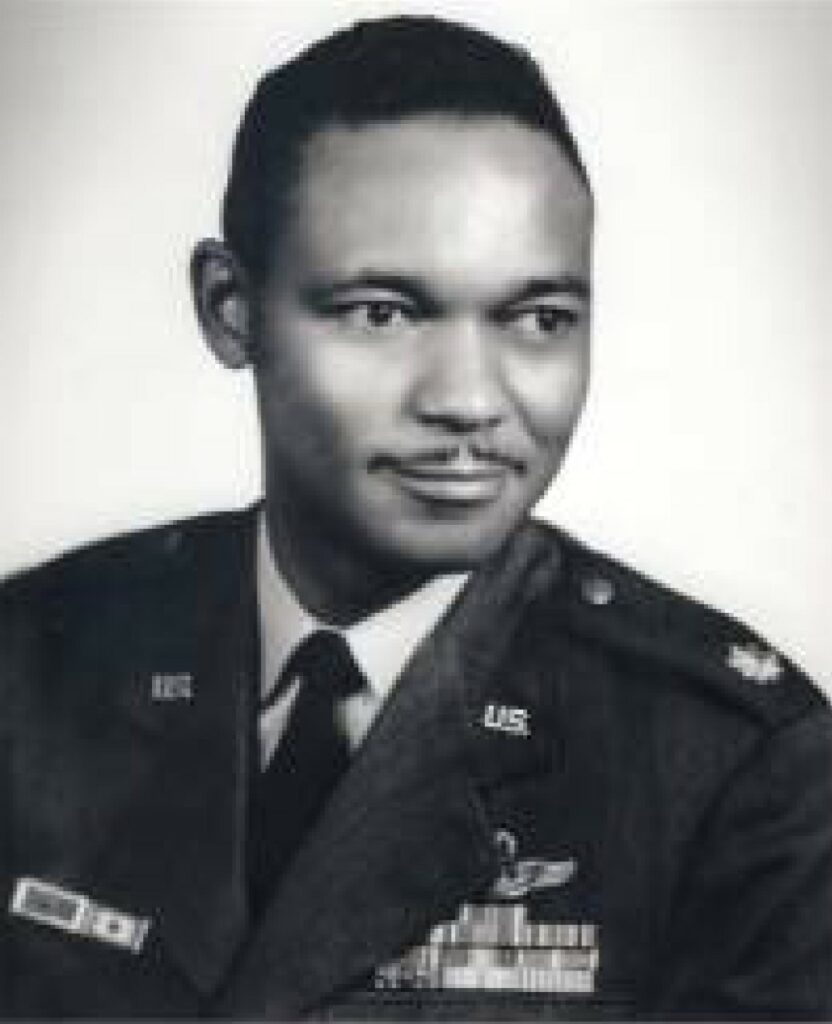
“Skipper’s Darling III”
In Stokes’ painting of the two pilots, the aircraft is Turner’s P-51C Mustang, “Skipper’s Darling III.” The P-51C was a great aircraft. When it was upgraded into the P-51D, it became arguably the best all-around fighter of WWII.

